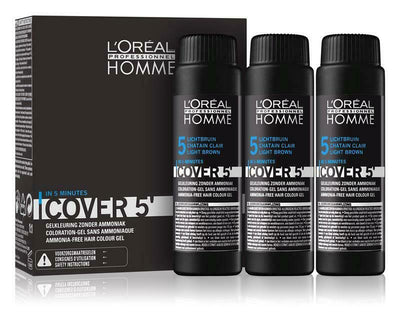At-Home DIY Color Correction
We've all been there. You excitedly reach for that box dye, dreaming of luscious locks in a brand new shade. But sometimes, the results land a little...off the mark. Brassy blonde hair, muddy browns, or uneven color application can leave you feeling less like a hair goddess and more like a technicolor defect.
So, the question arises: can you fix this at home, or is a trip to the salon inevitable? The answer, like most things in life, depends. Here's a breakdown of common color correction issues, methods, and some handy pro tips to help you decide if an at-home DIY color correction is the right thing for you.
Common Hair Color Issues:
-
Brassiness: This yellow or orange tinge plagues many blonde and highlighted heads. It's caused by underlying pigments in the hair being exposed after lightening.
-
Muddy Tones: This murky, undefined color often occurs when brunette hair is darkened too much, or when cool and warm tones clash.
-
Uneven Color: Patchy application or failure to properly lighten all strands can lead to blotchy, uneven color distribution.
-
Box Dye Disaster: Sometimes, boxed hair dyes simply don't deliver the promised results.
Color Correction Methods:
-
Color-depositing conditioners: These temporary colorants can help neutralize brassy tones or add subtle dimension. Think of them as makeup for your hair. If you think a trip to the salon is a must, but don’t have the time to go yet, then this would be a great temporary solution.
-
Purple shampoo: A holy grail for blondes, purple shampoo deposits violet pigments that counteract brassiness.
-
Color-removing products: Hair color removers can help lift unwanted dye and provide a cleaner canvas for re-coloring. However, be cautious – they can be harsh and damage hair.
-
Semi-permanent or demi-permanent dyes: These dyes can deposit new color without significantly lightening the hair. They're a good option for subtle corrections or adding dimension.
Color Correction Pro Tips:
-
Strand test, always! Before committing to a full head correction, test the product on a hidden strand to ensure the desired outcome.
-
Less is more. Start with a lighter application, especially when using color removers or hair dyes. You can always add more, but removing too much color is a recipe for disaster.
-
Research is key. When choosing products, understand the color wheel and how opposing colors interact. Purple counteracts brass, blue neutralizes orange, and so on.
-
Condition, condition, condition! Color correction can be drying on hair. Deep conditioning treatments are your best friend during this process.
So, should You DIY?
Here's the honest truth: At-home color correction can be successful for minor issues, especially brassiness or adding subtle dimensions. However, for major corrections, uneven application, or very dark hair that needs lightening, it's best to leave it to the professionals to avoid making the situation worse.
A skilled colorist can assess your specific situation, choose the right products, and achieve a flawless result while minimizing damage. Remember, healthy hair is the foundation for any great color, so prioritize its well-being.
Set on doing your color correction at home and by yourself? Make sure you’re well equipped with the right products! Hairsense has an intensive collection of products trusted by professionals that can help you achieve salon-quality color-corrections at home.








